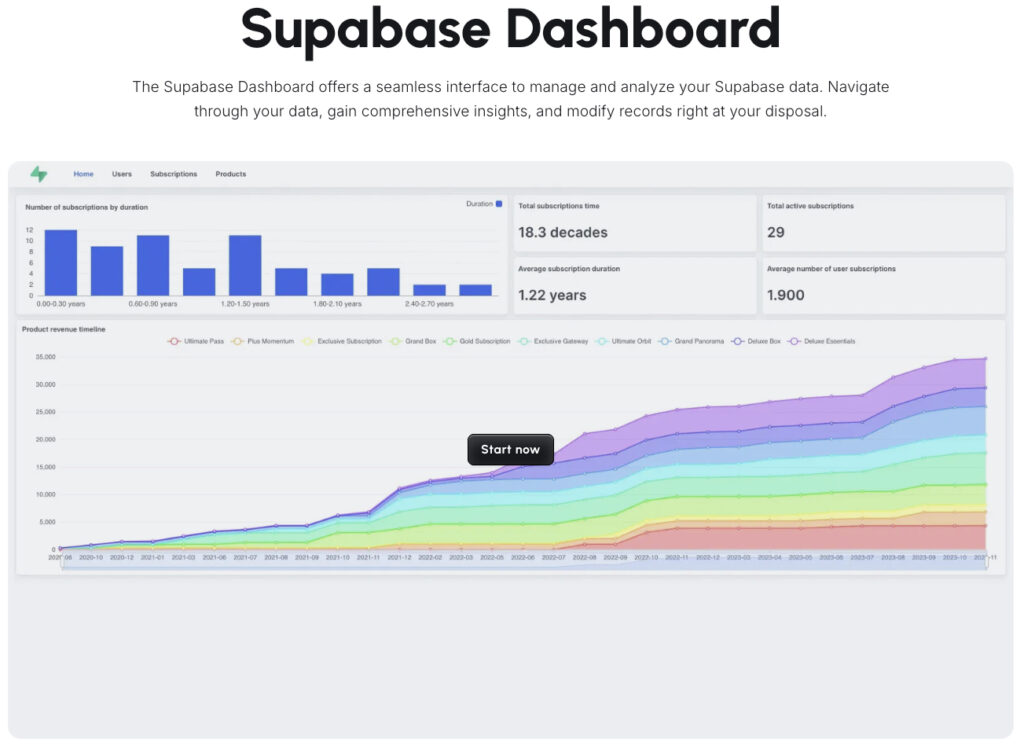Empowering Non-Technical Founders: Building AI Startups Without a CTO
In the rapidly evolving landscape of technology, a new archetype of entrepreneur is emerging: the non-technical founder who leverages artificial intelligence (AI) to build innovative startups without the traditional reliance on a technical co-founder or start-up CTO. This shift is democratizing entrepreneurship, enabling individuals with domain expertise and a compelling vision to transform industries through AI-driven solutions.
The Democratization of Technology
Historically, launching a tech startup necessitated a strong technical background or the partnership of a technical co-founder. However, the advent of AI-powered tools and platforms has lowered the barriers to entry, allowing non-technical founders to bring their ideas to fruition. Platforms like Replit have evolved to empower users to create software without coding knowledge, contributing to its mission of enabling the next billion software creators.
Similarly, Lovable, a Swedish AI-driven software engineering platform, enables non-coders to build viable tech businesses using natural language prompts. Since its founding, Lovable has achieved $17 million in annual recurring revenue and serves over 30,000 paying subscribers.
Case Study: Mytender
Consider the example of Mytender, an AI-powered startup founded by two undergraduate students from Southampton University. Without extensive technical backgrounds, they developed a tool to help companies write bids for contracts in industries like construction and facilities management. Their innovative approach attracted £250,000 in funding from Fuel Ventures, demonstrating that with the right idea and utilization of AI tools, non-technical founders can achieve significant milestones. 
Practical Steps for Non-Technical Founders to Build AI Startups
Embarking on the journey of building an AI-driven startup without a technical co-founder may seem daunting. However, with the right approach and tools, non-technical founders can successfully navigate this path. This section outlines actionable steps, introduces essential tools, and provides insights to empower founders in transforming their AI concepts into viable products.
1. Define Clear Objectives and Understand the Problem Space
Begin by articulating the specific problem your AI solution aims to address. A well-defined problem statement will guide your development process and help in communicating your vision to potential partners and investors. For instance, if you aim to enhance customer service experiences using AI, detail the current challenges and the desired improvements.
Actionable Tip: Conduct market research to validate the need for your solution. Engage with potential users to gather insights and refine your problem statement.
2. Leverage No-Code and Low-Code Platforms
The rise of no-code and low-code platforms has democratized software development, enabling non-technical founders to create applications with minimal coding knowledge. These platforms offer drag-and-drop interfaces and pre-built functionalities, accelerating the development process.
Recommended Tools:
Bubble: A no-code platform that allows users to design, develop, and host web applications.
Airtable: Combines the simplicity of spreadsheets with the complexity of databases, suitable for managing data-driven applications.
Zapier: Facilitates automation by connecting different apps and services, enabling workflows without coding.
Actionable Tip: Start with a prototype using these platforms to visualize your concept and gather early feedback. This approach saves time and resources before committing to full-scale development.
3. Incorporate AI Services and APIs
Integrating AI capabilities into your application is more accessible than ever, thanks to various AI-as-a-Service platforms. These services offer pre-trained models and APIs that can be incorporated into your application to add functionalities like natural language processing, image recognition, and predictive analytics.
Recommended Services:
IBM Watson: Provides a suite of AI tools and APIs for language processing, visual recognition, and more.
Google Cloud AI: Offers machine learning models and AI tools that can be integrated into applications.
Microsoft Azure AI: Provides AI services and cognitive APIs for various functionalities.
Actionable Tip: Evaluate these services based on your specific needs and consider factors like scalability, cost, and ease of integration.
4. Collaborate with AI Development Platforms
Platforms like Cursor and Streamlit have emerged to assist non-technical founders in building and deploying AI applications. Cursor, for instance, offers an intuitive interface to develop AI models without extensive coding, while Streamlit allows for the creation of custom web applications for machine learning and data science projects.
Actionable Tip: Utilize these platforms to develop a minimum viable product (MVP) that showcases the core functionalities of your AI solution.
5. Engage with Technical Advisors or Consultants
While leveraging no-code tools and AI services can significantly reduce the technical barriers, consulting with experienced AI professionals can provide valuable insights, ensure best practices, and help in navigating complex aspects of AI development.
Actionable Tip: Consider going through your existing network and finding skilled AI mentors on a project basis to fill knowledge gaps and strengthen your development process.
6. Implement Agile Development Practices
Adopting agile methodologies allows for iterative development, enabling you to adapt to feedback and evolving requirements. This approach fosters flexibility and ensures that the product remains aligned with user needs and market demands.
Actionable Tip: Use project management tools like Jira or Linear to organize tasks, track progress, and facilitate team collaboration.
7. Prioritize Data Collection and Management
AI models thrive on quality data. Establishing robust data collection and management practices is crucial for training effective AI models. Ensure compliance with data privacy regulations and implement measures to secure user data.
Actionable Tip: Utilize platforms like Airtable to manage datasets and consider data anonymization techniques to protect user privacy.

8. Focus on User Experience (UX) Design
An intuitive and user-friendly interface enhances user engagement and satisfaction. Investing in good UX design ensures that your AI solution is accessible and meets user expectations.
Actionable Tip: Use design tools like Figma or Adobe XD to create wireframes and prototypes, facilitating user testing and feedback incorporation. If you are a complete beginner, consider tools like Framer or Duda.
Infrastructure and Go-to-Market Strategies for AI Startups
Hosting and Infrastructure: Building a Scalable Foundation
Selecting the right hosting platform is pivotal for the performance and scalability of your AI application. Here are some top hosting options tailored for AI startups:
Vercel: Ideal for frontend applications, Vercel offers seamless integration with frameworks like Next.js and provides automatic scaling, making it a go-to choice for deploying modern web applications.
CoreWeave: Specializes in GPU-accelerated workloads, making it ideal for AI applications requiring high-performance computing.
Google Cloud Platform (GCP): Known for its AI and machine learning capabilities, GCP offers services like Vertex AI and generous startup credits through its Google for Startups Cloud Program.
Database Solutions: Managing Your Data Effectively
Efficient data management is crucial for AI applications. Consider the following database solutions:
Supabase: An open-source alternative to Firebase, Supabase offers real-time capabilities, authentication, and a Postgres database, making it suitable for AI-driven applications.
PlanetScale: A serverless MySQL-compatible database that provides scalability and reliability, ideal for applications expecting rapid growth.
Weaviate: An AI-native vector database designed for semantic search and recommendation systems, essential for AI applications dealing with unstructured data.

Frontend Frameworks and UI Libraries
Choosing the right frontend framework and UI library can significantly impact development speed and user experience:
Svelte: A modern JavaScript framework that compiles components into highly efficient imperative code, resulting in faster load times and better performance.
Tailwind CSS: A utility-first CSS framework that allows for rapid UI development with a consistent design system.
T3 Stack: A full-stack framework combining Next.js, TypeScript, Tailwind CSS, and tRPC, providing a robust foundation for building scalable applications.
Marketing Strategies: Reaching Your Target Audience
Effective marketing is essential to gain traction in a competitive landscape. Here are some strategies to consider:
Content Marketing: Develop informative content that addresses your audience’s pain points. This establishes authority and drives organic traffic.
Search Engine Optimization (SEO): Optimize your website and content with relevant keywords to improve visibility in search engine results.
Social Media Engagement: Utilize platforms like LinkedIn and Twitter to share updates, engage with your audience, and build a community.
Email Marketing: Implement personalized email campaigns to nurture leads and maintain customer relationships.
Partnerships and Collaborations: Collaborate with other businesses or influencers to expand your reach and credibility.
In this first installment, we’ve explored the evolving landscape that empowers industry experts to leverage AI tools and strategic partnerships to bring their innovative ideas to life.
Key Takeaways:
The Rise of Non-Technical Founders: AI advancements have democratized tech entrepreneurship, enabling individuals without coding backgrounds to launch successful startups.
Practical Steps to Build Your Startup: Utilizing no-code platforms, AI services, and strategic collaborations can bridge the technical gap, turning your vision into a viable product.
Infrastructure and Go-to-Market Strategies: Selecting the right hosting solutions, databases, and marketing approaches is crucial for scalability and reaching your target audience effectively.
As we’ve outlined, the journey from concept to market-ready product is attainable with the right tools and guidance. At B-works, we specialize in supporting founders through this process, offering expertise in product development, market strategy, and funding acquisition.
Looking Ahead:
In our upcoming second installment, we’ll delve deeper into:
Scaling Your AI Startup: Strategies to grow your operations and adapt to market demands.
Securing Funding: Navigating the investment landscape to fuel your startup’s growth.
Building a Robust Team: Attracting and retaining talent to drive your startup forward.
Stay tuned for actionable insights and real-world examples that will equip you with the knowledge to scale your AI startup successfully.
Join the Conversation:
We’d love to hear about your experiences and challenges as a non-technical founder in the AI space. Share and reach out to us directly for personalized guidance.
Ready to Take the Next Step?
If you’re poised to transform your AI startup idea into reality, contact B-works today. Our team is here to support you through every phase of your entrepreneurial journey.
Stay connected for the next part of our series, where we’ll explore scaling strategies, funding avenues, and team-building essentials for your AI startup.
Contact us about your ideas - we help companies worldwide
References
Airtable. (n.d.). Airtable. Retrieved April 11, 2025, from https://www.airtable.com
Asana. (n.d.). Asana. Retrieved April 11, 2025, from https://asana.com
Adobe. (n.d.). Adobe XD. Retrieved April 11, 2025, from https://www.adobe.com/products/xd.html
Bubble. (n.d.). Bubble. Retrieved April 11, 2025, from https://bubble.io
Cursor. (n.d.). Cursor. Retrieved April 11, 2025, from https://www.cursor.so
Figma. (n.d.). Figma. Retrieved April 11, 2025, from https://www.figma.com
Google Cloud. (n.d.). AI and Machine Learning Products. Retrieved April 11, 2025, from https://cloud.google.com/products/ai
